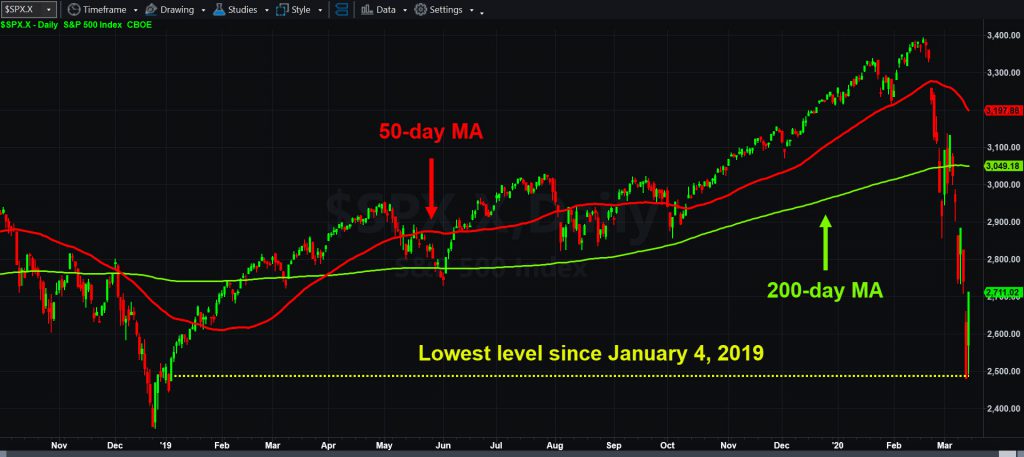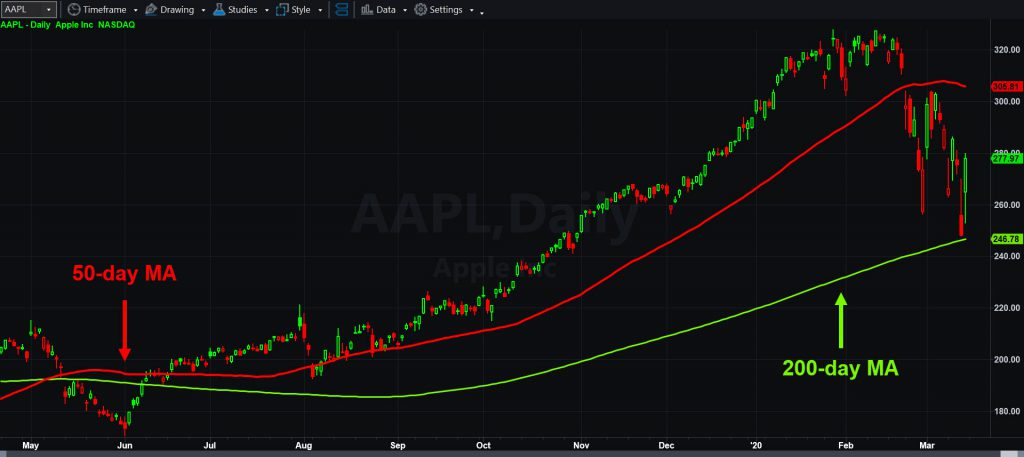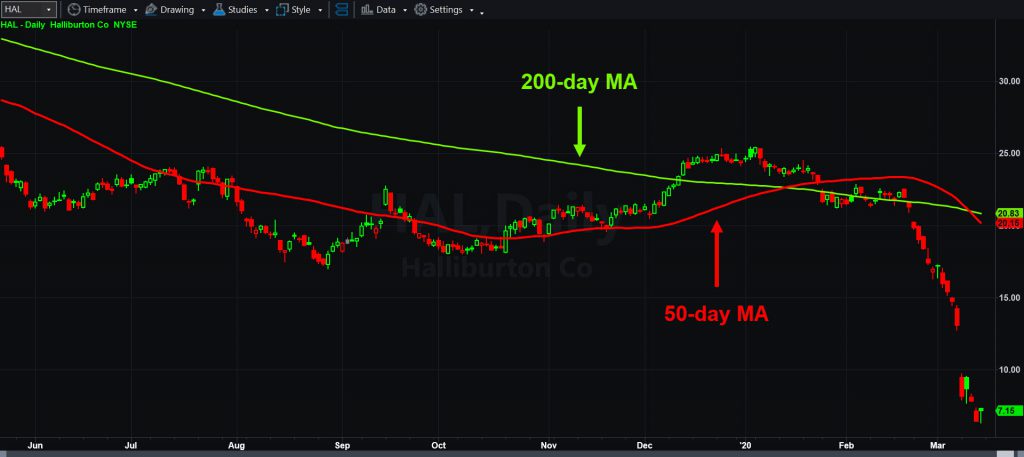Stocks crashed again last week, but it could have been a lot worse.
At one point, the S&P 500 was down more than 16 percent because of coronavirus. If the index had remained there, it would have been the second-biggest drop since at least 1950.
But then a combination of short-covering and government response kicked in. Sellers disappeared with the market back to its early-2019 level. The Federal Reserve kept the liquidity flowing as Republicans and Democrats prepared relief measures.

That triggered a dramatic turn on Friday afternoon as buyers stampeded back into stocks. By the time the dust settled, the S&P 500 ended the week down 8.8 percent. Every major sector declined, although key technology stocks did much better than the rest of the market.
Apple Barely Falls
Apple (AAPL), for example, declined less than 4 percent. Microsoft (MSFT) fell less than 2 percent. Both remained above their 200-day moving averages. The same was true for Advanced Micro Devices (AMD), Nvidia (NVDA) and Tesla (TSLA).

That shows investors didn’t mass-liquidate the market’s most important technology stocks.
The greatest pain was felt by fossil-fuel companies like Apache (APA), Occidental Petroleum (OXY) and Halliburton (HAL). Each dropped more than 40 percent. They were already hurting from weak global demand. Then coronavirus halted global travel and Saudi Arabia boosted oil production.
Throw in heavy debt loads, and firms across the energy sector are at risk of going under.
Coronavirus: The Ultimate Black Swan
The current market volatility is unlike any other in history because it lacks a financial or economic cause. Most significant selloffs before resulted from recessions, rate hikes or buyer exhaustion.
This drop occurred as economic numbers improved and the Federal Reserve shifted toward lower rates. There were also few signs of buyer exhaustion because the S&P 500 only broke out to new highs in late October.
Coronavirus is a true aberration because it emerged so quickly and has no recent precedent. Governments are improvising painful solutions — like banning travel and gatherings — that make recession a near-certainty.
Investors should realize this is truly an unusual time. Forecasting models are mostly irrelevant because we can’t guess what might happen.

This creates opportunities for short-term traders, especially those using futures. However, longer-term investors should realize how risky and volatile this market is.
The uncertainty won’t last forever. But for now, things might still need to get worse before they get better.


























